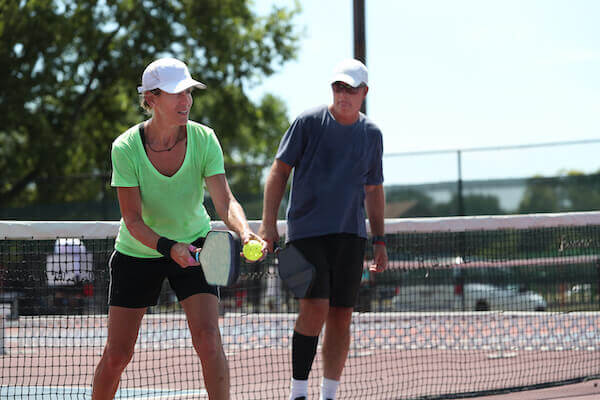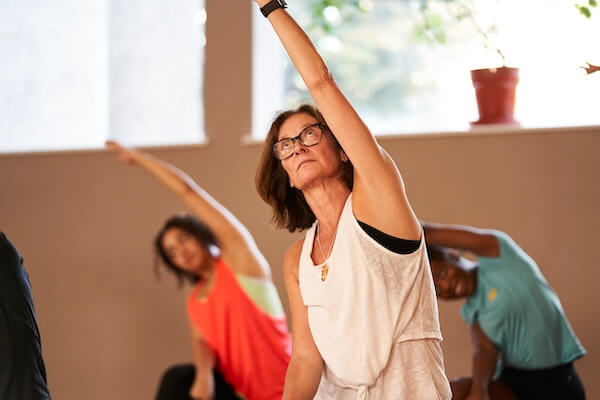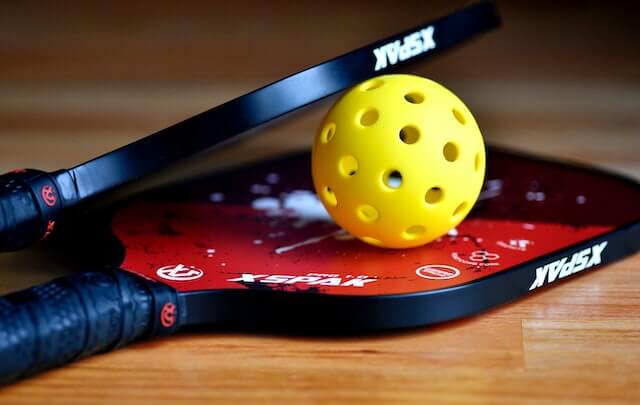
Pickleball, a sport that combines elements of tennis, table tennis, and badminton, has grown exponentially in popularity since its invention in 1965. Played with paddles and a perforated plastic ball, it's a game that welcomes all ages and skill levels.
Originating on Bainbridge Island in Washington state, pickleball was conceived as a fun backyard activity. It's since achieved state recognition, being declared Washington's official sport in 2022.
Pickleball Basics
Pickleball can be played as singles or doubles, indoors or outdoors. The court measures 44 by 20 feet, slightly larger than a table tennis table but smaller than a tennis court. Players serve underhand, aiming to get the ball over a 34-inch-high net.
Unique to pickleball is the "non-volley zone" or "kitchen" – a 7-foot space on each side of the net. Here, the ball must bounce once before being returned, preventing players from smashing the ball close to the net. This rule, coupled with the ball's low bounce and side-out scoring, makes for exhilarating gameplay.
Pickleball History
In 1965, Joel Pritchard and his friends, Barney McCallum and Bill Bell, sought a way to entertain their families. Using improvised equipment, they birthed pickleball. Interestingly, the game gained a Hawaiian moniker, "pukaball", due to the ball's hole-filled design. "Puka" translates to "hole" in Hawaiian.
Why Play Pickleball?
One of the best reasons to play pickleball is that it is accessible to all skill levels and ages. Whether you’re a seasoned athlete or a complete newbie, pickleball is an excellent choice for you! Pickleball is an easy sport to learn, especially for people who have played racket sports in the past.
Even though it has a lot of movement, players aren’t running up and down the court the whole time. There are plenty of breaks between points and serves to catch your breath and let your heart rate go back to normal.
Pickleball is a perfect sport for retirees and seniors who want to stay fit and healthy while enjoying recreational sports they can play with their friends and families. And with so many pickleball courts popping up in communities across the world, this sport is now much more accessible than ever before.
Equipment and Court Layout
Court:
A pickleball court resembles a doubles badminton court in size.
It's marked with a non-volley line 7 feet from the net, a
baseline, and a service court split by a center line. Though
specialized surfaces exist, it's common to see courts on concrete,
Astroturf, or indoor basketball courts.
Net:
The net is set at 36 inches at the ends and dips to 34 inches in
the center.
Ball:
The game began with a Wiffle ball,
but official pickleball standards now specify a ball with 26 to 40
evenly spaced holes, a particular weight, and diameter. There are
approved balls for tournament play, with some designed
specifically for outdoor conditions.
Paddle:
Paddle standards stipulate a maximum combined length and width,
with specific constraints on individual dimensions. Made from
non-compressible material, sanctioned paddles must feature a
smooth surface. Paddles made of carbon fibre are increasingly the
most prefered option. Look for
USAPA-approved
paddles for additional peace of mind. Most pickleball
locations offer to rent out racquets, balls, and nets, and
some even throw in free equipment rental when you book a court.
How to Play Pickleball
Serving:
A server, positioned behind the baseline, serves diagonally. There
are two serve types: volley and drop. In the former, the ball is
hit mid-air with the paddle's highest point below the wrist. The
latter involves dropping the ball and letting it bounce before
serving. Recent rule changes prohibit the 'spin serve'.
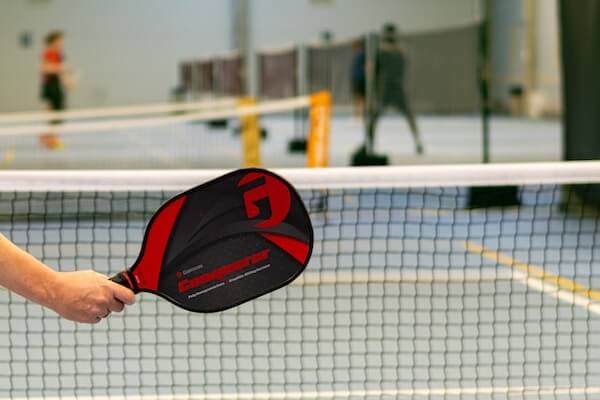
Scoring:
Only the serving side can earn points. The score consists of the
server's score, the opponent's score, and, in doubles, the server
number.
Two-bounce rule:
This rule mandates two bounces before either team can volley the
ball, ensuring both sides play grounded shots before engaging in
volleys.
Play Sequence:
Rallies continue until one side falters. In doubles, each team has
two chances to serve before yielding to the opposition. Games
typically end when a side reaches 11 points with at least a
2-point lead, though tournament variations exist.
Key Points and Faults
Players must be cautious of the non-volley zone, ensuring they
only volley when positioned outside it. Other common faults
include incorrect server or receiver actions, serving from the
wrong position, and failing to get the ball over the net or within
bounds.
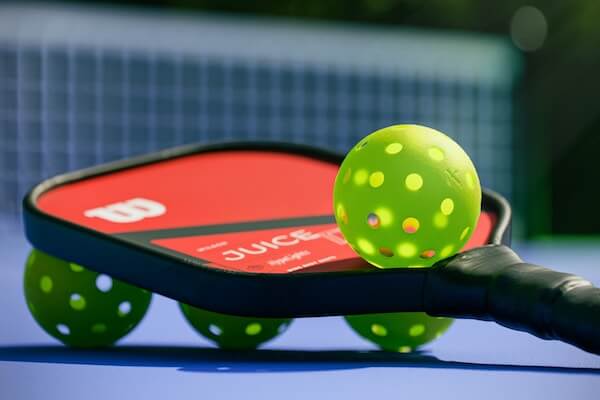
Where to Play Pickleball
Pickleball is increasingly growing in popularity, so you can find pickleball courts in many public recreational facilities, senior centers, and health clubs.
A conventional pickleball court is 44 feet long (including lines) and 20 feet broad, making it roughly the same size as a doubles badminton court (inclusive of lines). A pickleball court's nett is 34 inches high in the middle and 36 inches high on the sidelines. A pickleball court is marked with right and left service courts as well as a kitchen-style 7-foot non-volley zone in front of the nett.
Yes, there are many similarities between a pickleball
court and a tennis
court. If you can’t find any nearby, you can also check with
local badminton or tennis centers, if they will be willing to
accommodate you.
If you need someone to play with, a great option is to try a local
pickleball club or social. Find one through our website
to get started.
Join in the fun
Pickleball is a great choice for all kinds of players, both young
and old, since it is easy to learn and accessible to all skill
levels. If you are looking for an exciting new sport to play with
friends or family, pickleball is an excellent choice.
FAQ
What are the basic rules of pickleball?
Pickleball is a fast-paced racquet sport typically played in
either doubles or singles. The game is played on a rectangular
court divided by a net, and players use solid paddles and a
perforated plastic ball. The serve is a critical aspect of
pickleball, with specific rules such as serving diagonally, below
waist level, and within certain court boundaries. Players continue
serving until they commit a fault, and in doubles, both team
members have the opportunity to serve and score points.
Scoring in pickleball is straightforward, with points earned
exclusively by the serving team. Games are typically played to 11
points, with a requirement to win by at least 2 points. A unique
feature is the two-bounce rule, requiring both teams to let the
ball bounce once in each court before volleying or returning it.
The non-volley zone, also known as "the kitchen," is a crucial
area near the net where volleying is prohibited. Faults, which
stop play due to rule violations, result in points for the
opposing team or a loss of serve.
What is a kitchen in Pickleball?
In pickleball, "the kitchen" refers to the non-volley zone. It is
a rectangular area on both sides of the net, extending 7 feet from
the net into the court. The non-volley zone is a critical part of
the pickleball court, and there are specific rules associated with
it.
Players are not allowed to volley the ball (hit it in the air
without letting it bounce) while standing inside the non-volley
zone. Additionally, it is a fault if any part of a player's body,
including their feet, touches the non-volley zone, including the
lines marking its boundaries, during a volley.
The purpose of the non-volley zone is to promote fair play,
prevent players from dominating the net area, and encourage
strategic shot placement. Players must be mindful of the
non-volley zone rules to ensure a level playing field and maintain
the integrity of the game.
How is the serving team determined in pickleball?
To determine which player or team has the first choice of side,
service, or receive in pickleball, any fair method can be used.
This might include a coin flip or another mutually agreed-upon
method. The outcome of this determination sets the initial
conditions for the start of the game or match.
What happens if my service touches the line in Pickleball?
In pickleball, a ball contacting any part of any line, except the
non-volley zone line on a serve, is considered "in." If a serve
contacts the non-volley zone line, it is short and considered a
fault.
When are you allowed to step in the kitchen in Pickleball?
In pickleball, you are allowed to step into the kitchen (the
non-volley zone) at any time except when you are volleying the
ball. When volleying the ball, you must ensure that no part of
your body, including your feet, touches the non-volley zone.
Stepping into the kitchen while volleying or having any part of
your body or anything you are wearing or carrying touch the
non-volley zone lines or the zone itself during a volley is
considered a fault. It's also a fault if a player steps on the
non-volley zone, including the lines, if their momentum
causes them or anything they are wearing or carrying to touch the
non-volley zone after volleying. Therefore, you can enter the
kitchen at other times, such as between volleys or during regular
play, but exercise caution to avoid faults during the active play
near the net.
What is the two-bounce rule in pickleball?
The two-bounce rule in pickleball states that when the ball is
served, the receiving team must let it bounce before returning,
and then the serving team must also let it bounce before
returning, resulting in two bounces. After the ball has bounced
once in each team's court, both teams are allowed to either volley
the ball (hit it before it bounces but only from outside the
non-volley zone a.k.a the kitchen) or play it off a bounce (ground
stroke). This rule eliminates the serve and volley advantage and
encourages longer rallies.
How is scoring done in pickleball?
Points are scored only by the serving team in pickleball. Games
are usually played to 11 points, with a requirement to win by 2
points. In tournament games, the score limit may be extended to 15
or 21 points, still requiring a 2-point margin.
In pickleball, scoring is determined by the serving team and varies slightly depending on whether you are playing doubles or singles:
Doubles Scoring:
- When the service goes to the opposing team (side out), the first serve is made from the right/even court.
- Both players on the serving team have the opportunity to serve
and score points until their team commits two faults. This means
that if the serving team makes an error or fault, such as
serving the ball out of bounds or into the net, the opposing
team gets a point and the next server from the serving team gets
a chance to serve.
Singles Scoring:
- In singles play, the server serves from the right/even court when their score is even (0, 2, 4, 6, 8, 10). When the server's score is odd (1, 3, 5, 7, 9), they serve from the left/odd court.
- Similar to doubles, the server continues to serve and score
points until they commit a fault. If they fault, the opponent
earns a point, and the opponent then gets to serve.
Can the ball touch the net during serve in pickleball?
In pickleball, if the ball can touches the net, it is referred to
as a "let". When a let occurs, it means that the ball hits the net
but proceeds to cross into the correct diagonal court as required
by the serving rules. Let serves are replayed without any penalty,
allowing the server another attempt to make a successful serve.
Players continue serving until they commit a fault or until the
opposing team wins the serve. If the ball touches the net during
the serve in pickleball but doesn't land in the correct diagonal
court on the opposite side, it is considered a fault.


